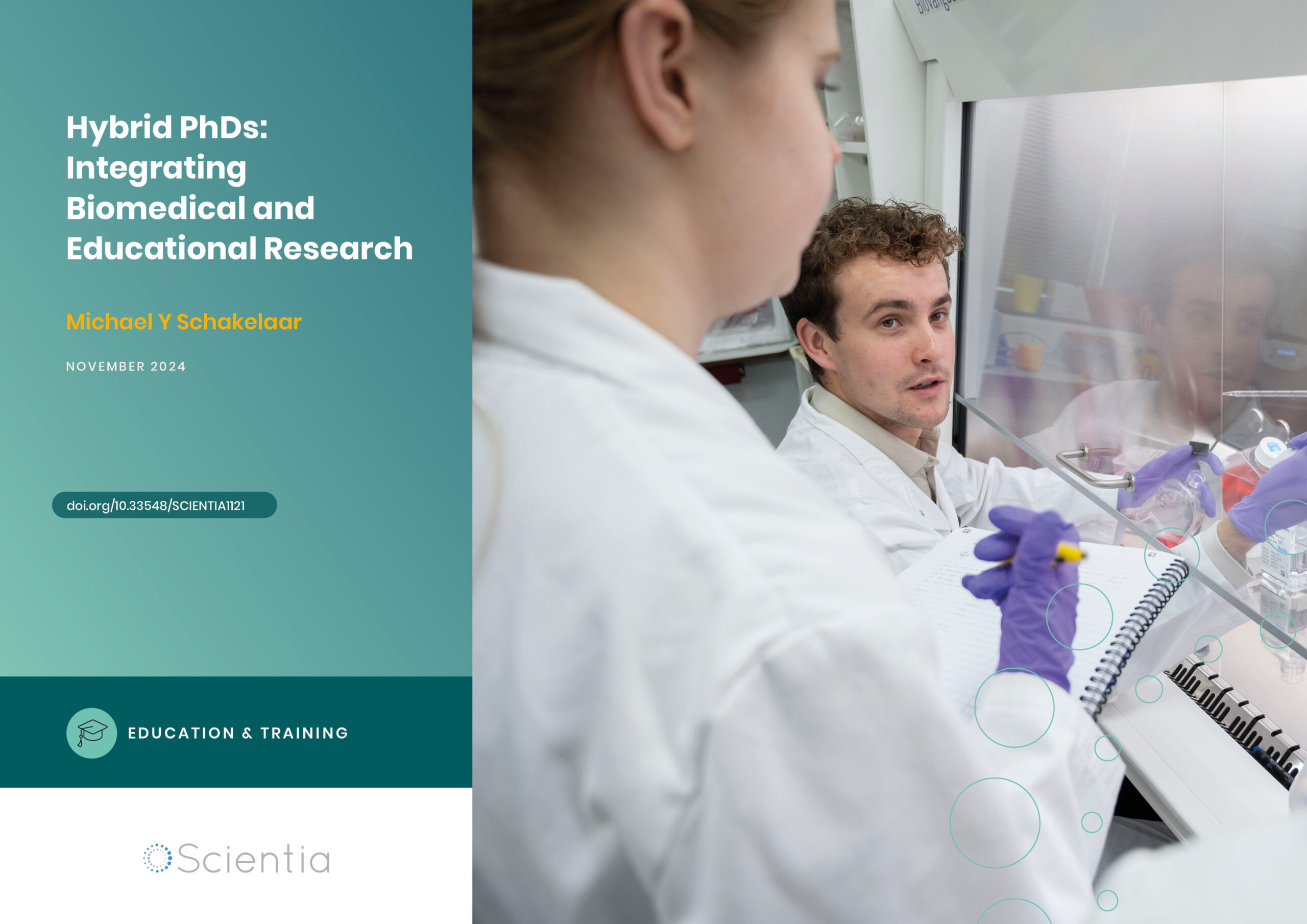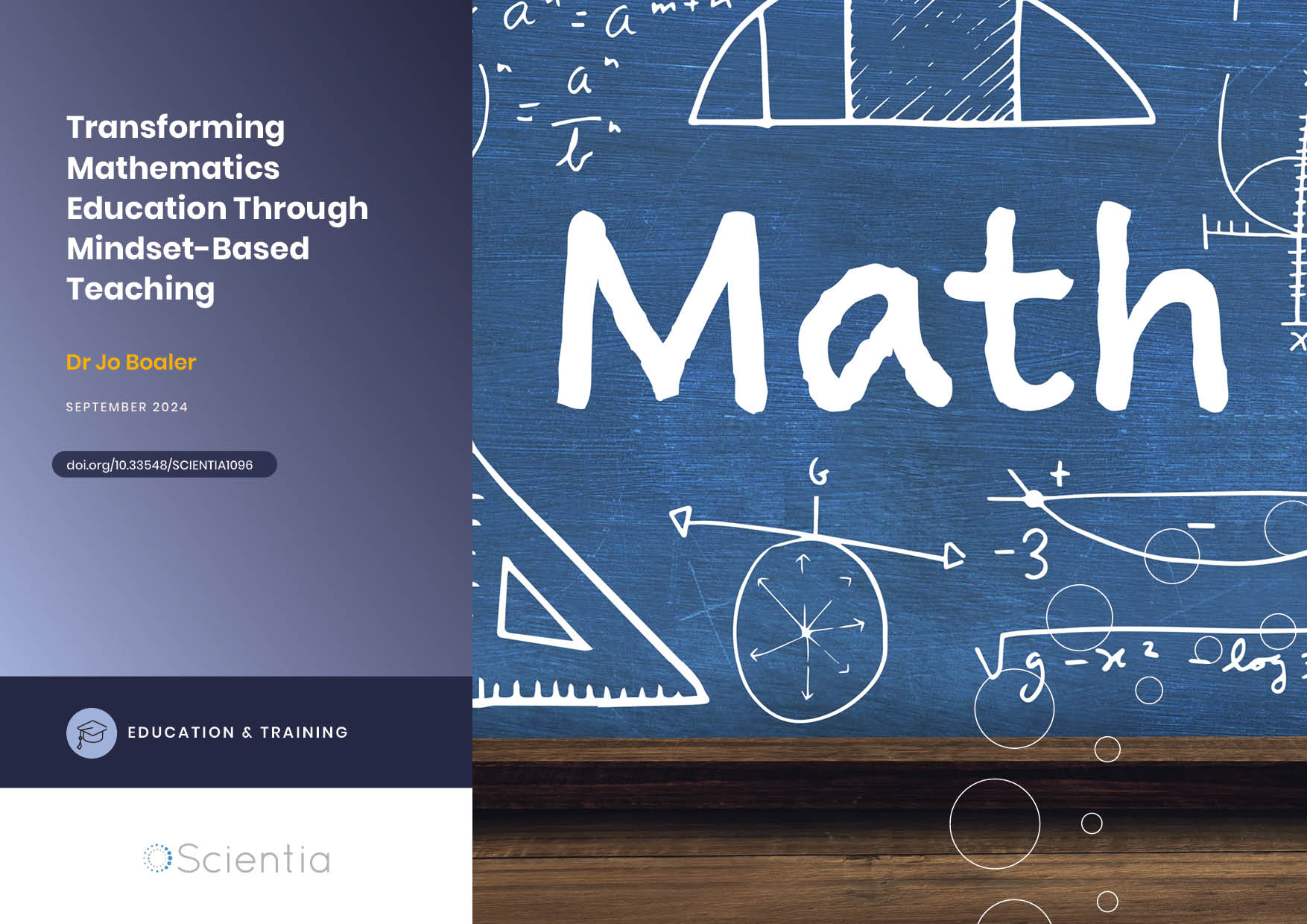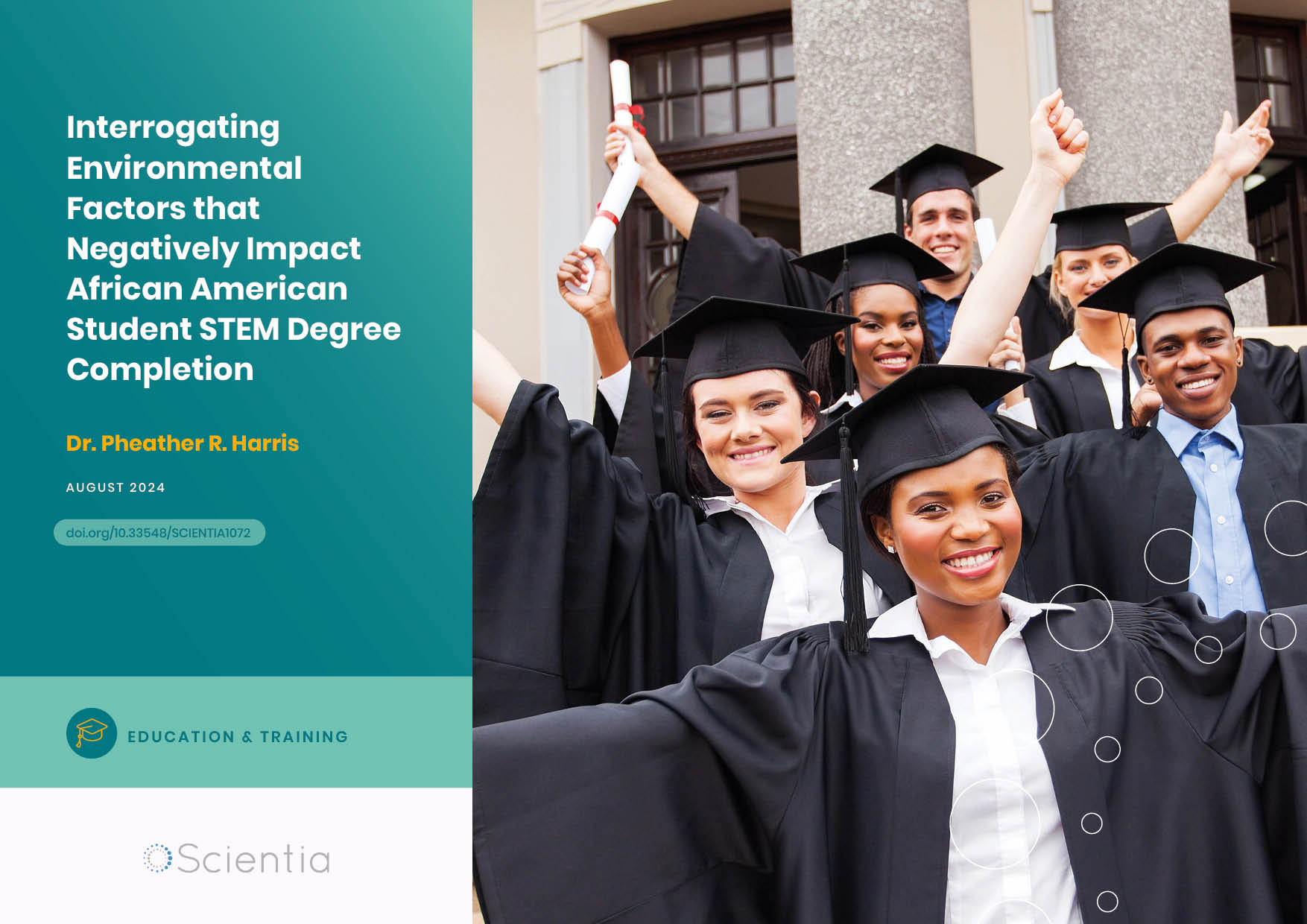Dr Alexandra Babino | Bilingual Education: Nurturing Language Skills and Cultural Identity in Latino Students
Bilingual education programmes aim to help students develop proficiency in multiple languages while learning grade-level content. However, the reality is often more complex, especially for Latino students navigating between Spanish and English in the USA. Dr Alexandra Babino from Texas Woman’s University explores how these students develop their language skills and identities in bilingual educational settings. Her research provides valuable insights to help educators nurture students’ multilingual abilities and cultural connections.
The Promise and Challenges of Bilingual Education
Bilingual education programmes aim to develop students’ proficiency in two languages, typically through instruction in both languages across subjects. For Latino students in the USA, these programmes often focus on developing skills in both Spanish and English. In theory, this approach should allow students to maintain their home language while also gaining fluency in English.
However, the reality is often more complex. Even in well-designed bilingual programmes, students may show a preference for English over time. This shift can occur due to the dominance of English in broader society and the subtle messages students receive about the relative value and status of different languages.
Dr Alexandra Babino and her colleagues, Dr Mary Amanda Stewart and Dr Kimberly Muñoz, have conducted extensive research examining how Latino students navigate their language identities and skills in bilingual educational contexts. Their work reveals the nuanced ways that students’ language attitudes and usage evolve, often in unexpected directions.
Language Shift in Dual Language Programmes
In one study, Drs Babino and Stewart surveyed 63 fifth-grade Latino students in a dual language programme. These students had been in the programme since kindergarten, receiving 50% of instruction in Spanish and 50% in English.
The results were surprising. Although the students claimed Spanish as their home language and valued both languages, other data showed they preferred English in both academic and social settings. For example, over half said they preferred to take tests in English rather than Spanish.
This English dominance extended to social settings as well. Students reported primarily using English or a mix of English and Spanish with siblings and friends. Pure Spanish usage was rare outside of interactions with parents or in specific cultural contexts like church. Even after participating in a dual language programme for six years and coming from Spanish-speaking homes, these students had shifted to a complicated preference for English both socially and academically.
Exploring Factors Behind Language Preferences
To better understand the factors influencing students’ language attitudes and usage, Drs Babino and Stewart conducted in-depth interviews with a subset of students and identified several key themes. Notably, students believed that English was essential for academic and career success, with one student stating that English ‘makes you a lot better in life’ and is needed ‘to be American’. Many students felt more comfortable with English academically, explaining ‘I prefer English better because I know it more’.
Socially, students reported primarily using English with friends and for entertainment like music and TV. While they valued Spanish, they saw it mainly as useful for communicating with Spanish-speaking family members. The interviews also revealed complex cultural identities, with students expressing pride in their Mexican heritage and Spanish abilities but also feeling pressure to develop strong English skills.
These findings highlight the complex linguistic environment Latino students navigate, even in supportive bilingual programmes. While valuing both languages, students often gravitate towards English due to its perceived importance and social dominance.
The Role of Language Ideologies
The team’s research emphasises how broader societal attitudes about language, or language ideologies, shape students’ experiences. Even when bilingual programmes aim to treat languages equally, students absorb messages about the relative status and value of different languages.
For example, students noted that they needed to use English to communicate with monolingual teachers and administrators who held positions of authority. In contrast, their Spanish usage was often limited to family settings or informal peer interactions.
These experiences reinforce the idea of English as the language of power and success, while Spanish is viewed as less academically and professionally valuable. Over time, this can lead students to invest more in developing their English skills, even if they maintain a connection to Spanish.

Long-term Language Investment
Drs Babino and Stewart conducted a study examining the ‘multilingual investment’ of young adult Latinas to explore how language attitudes and skills develop over the lifespan. This concept refers to an individual’s commitment to developing and using multiple languages. The study focused on three young women who self-identified as Mexican and had strong Spanish and English skills. Through surveys and in-depth interviews, Drs Babino and Stewart explored the factors contributing to their continued investment in both languages.
Several themes emerged. In particular, strong family relationships, especially with Spanish-speaking relatives, motivated ongoing Spanish use and development. A strong sense of Mexican identity was tied to the Spanish language abilities of these young women. Finally, access to Spanish courses in high school and college helped participants maintain and improve their academic Spanish skills.
For one participant, a dual language programme in elementary school provided a strong foundation in both languages. Another participant who completed most of her schooling in Mexico before moving to the USA maintained strong Spanish skills.
These findings suggest multiple pathways for Spanish-speaking students to maintain robust bilingual abilities, even in predominantly English environments. Importantly, formal Spanish instruction at secondary and post-secondary levels can play a crucial role when early bilingual education is not available.
Insights for Educators
This body of research offers several key insights for educators working with bilingual Latino students. Given the dominance of English, educators need to create intentional opportunities for students to develop and use Spanish in academic contexts. In doing so, it is important to help students critically examine societal attitudes about different languages and their relative status.
Providing ongoing language support is crucial, including offering Spanish language courses and content instruction in Spanish beyond elementary school. Educators should support students in developing positive cultural identities tied to their heritage language and partner with Spanish-speaking families to reinforce the value of bilingualism. Creating meaningful uses for Spanish ensures students have authentic reasons to use academic Spanish beyond family communication. By implementing these strategies, educators can help counter the tendency for English to dominate and support students in developing truly balanced bilingual skills.
The Benefits of Bilingualism
While the work of Dr Babino and her colleagues highlights challenges in bilingual education, it also underscores the potential benefits when students successfully develop strong skills in multiple languages. Research suggests bilingualism can enhance cognitive flexibility, problem-solving skills, and metalinguistic awareness. Strong skills in both languages can also support academic achievement across subjects. Bilingualism allows students to engage more deeply with their heritage culture while also navigating mainstream society.
Proficiency in multiple languages and positive cultural identities can engender agency to use languages for one’s own goals. This is especially true when educators focus on cultivating positive multicultural identities. Drs Babino, Stewart, and Muñoz emphasise that these benefits make it crucial to find ways to nurture students’ bilingual development throughout their educational journey.
Bilingual Identities and Skills Across the Lifespan
Looking ahead, Dr Babino and her team hope to further explore how bilingual identities and skills evolve across the lifespan. They are particularly interested in examining how educational experiences across the school pipeline in officially bilingual and “English” classrooms influence language attitudes and abilities into adulthood and beyond.
Specifically, they see a need for more research on effective strategies for promoting academic Spanish skills at the secondary and post-secondary levels. This could include investigating innovative approaches to content instruction in Spanish and exploring how to leverage students’ bilingual abilities across the curriculum. Ultimately, their team’s work aims to support educators in creating learning environments that truly value and develop students’ full linguistic repertoires. By nurturing bilingualism, they believe we can help students reap the cognitive, academic, and cultural dimensions of multilingualism while developing strong, positive identities.
A Holistic View of Bilingual Development
Drs Babino, Stewart, and Muñoz’s research paints a nuanced picture of bilingual education and development. While challenges exist in helping students maintain strong skills in minority languages like Spanish, their work also reveals multiple pathways to fostering robust bilingualism in complex social contexts.
By taking a holistic view that considers cognitive, social, and identity factors, educators can better support students’ holistic bilingual development. This approach recognises that language learning is about more than just acquiring vocabulary and grammar – it is intimately tied to how students see themselves and engage with the world around them.
As our societies become increasingly multilingual and multicultural, the insights from research projects such as this take on added importance. By understanding the complex dynamics of bilingual development, we can create educational approaches that truly support linguistically diverse communities and help students thrive across languages and cultures.
SHARE
DOWNLOAD E-BOOK
REFERENCE
https://doi.org/10.33548/SCIENTIA1104
MEET THE RESEARCHERS

Dr Alexandra (Ale) Babino
Associate Professor of Literacy and Language
Texas Woman’s University
Denton, TX
USA
Dr Alexanadra (Ale) Babino is an Associate Professor and the Director of the Multilingual and Multicultural Studies Master’s programme at Texas Woman’s University. Her experiences as a second-generation Mexican American and classroom bilingual teacher, curriculum writer, facilitator, and specialist deeply inform her work as a teacher-researcher. Over the last 18 years, Dr Babino has received multiple awards for her teaching and research in bilingual education. She is particularly interested in how power, systems, and languaging (re)form the identities and biliteracies of emergent bilinguals and their teachers.
CONTACT
E: ababino@twu.edu
W: https://www.researchgate.net/profile/Alexandra-Babino
X: @AleBabino, @TWUMultilingual

Dr Mary Amanda (Mandy) Stewart
Texas Woman’s University
Denton, TX
USA
Dr Mary Amanda (Mandy) Stewart is based at Texas Woman’s University. In addition to various journal articles, she has authored and edited seven books on language and literacy. Among these are the practitioner-focused But Does This Work with English Learners? A Guide for ELA Teachers 6-12 and the critical research book Radicalizing Literacies and Languaging: A Framework toward Dismantling the Mono-mainstream Assumption. She is also Professor of Research at the University of Lower Silesia in Poland, where she supports teachers of migrant and refugee students. Her work bridges research and practice to promote equitable educational opportunities for immigrant and bilingual individuals.
CONTACT
E: MStewart7@twu.edu
W: https://www.maryamandastewart.com/
X: @DrMandyStewart

Dr Kimberly Muñoz
Universidad Autónoma del Estado de Hidalgo
Hidalgo
Mexico
Dr Kimberly Muñoz is based in the Linguistics Department at the Universidad Autónoma del Estado de Hidalgo, Mexico. As an educator, she has served elementary bilingual students, gifted and talented students, and adult ESL learners in the USA and currently serves pre-service English teachers in Mexico. Professor Muñoz’s current research focuses on engagement in instructional spaces that support language learning with an emphasis on teacher preparation programmes. She brings a wealth of practical classroom experience to her research and teaching, bridging theory and practice in bilingual and ESL education.
CONTACT
E: marie_kimberly@uaeh.edu.mx
W: https://www.uaeh.edu.mx/campus/icshu/licenciatura/ensenanza-lengua-inglesa/
FUNDING
Part of Drs Babino and Stewart’s work was funded by the Jane Nelson Institute for Women’s Leadership at Texas Woman’s University through the LEAMOS grant.
FURTHER READING
A Babino, K Muñoz, Caminos de convivencia: A comparative case study of bilingual pre-service teachers biliteracies development, Bilingual Research Journal, 2023, 46, 176–201. DOI: https://doi.org/10.1080/15235882.2023.2231393
A Babino, MA Stewart, Whose bilingualism counts? Juxtaposing the sanctioned and subaltern languaging of two dual language teachers, Journal of Language, Identity & Education, 2023, 1–18. DOI: https://doi.org/10.1080/15348458.2023.2169697
A Babino, MA Stewart, Re-modeling dual language programs: Teachers enact agency as critically conscious language policymakers, Bilingual Research Journal, 2018, 41(3), 272–297. DOI: https://doi.org/10.1080/15235882.2018.1489313
REPUBLISH OUR ARTICLES
We encourage all formats of sharing and republishing of our articles. Whether you want to host on your website, publication or blog, we welcome this. Find out more
Creative Commons Licence (CC BY 4.0)
This work is licensed under a Creative Commons Attribution 4.0 International License. 
What does this mean?
Share: You can copy and redistribute the material in any medium or format
Adapt: You can change, and build upon the material for any purpose, even commercially.
Credit: You must give appropriate credit, provide a link to the license, and indicate if changes were made.
SUBSCRIBE NOW
Follow Us
MORE ARTICLES YOU MAY LIKE
Michael Y Schakelaar | Hybrid PhDs: Integrating Biomedical and Educational Research
Biomedical science-based PhDs are often research-focused, designed to hone a candidate’s expertise in a specific field. However, subsequent careers in university settings frequently entail substantial teaching responsibilities, with PhD graduates unprepared for the dual roles of researcher and educator. Hybrid PhDs aim to better equip graduates for academic careers by integrating highly specialised scientific knowledge with educational research. PhD candidate Michael Y Schakelaar of University Medical Center Utrecht (Utrecht University), The Netherlands, provides an outstanding example of how this can be achieved.
Dr Jo Boaler | Transforming Mathematics Education Through Mindset-Based Teaching
Mathematics education in the United States has long struggled with issues of underachievement and inequity. Despite decades of reform efforts, many students continue to struggle with math, developing negative attitudes and beliefs about their own mathematical abilities. However, recent research into mindset and brain plasticity offers promising new directions for transforming how mathematics is taught and learned. A groundbreaking study led by Dr Jo Boaler at Stanford University demonstrates how a ‘mathematical mindset’ approach to teaching can dramatically improve student achievement and engagement, even in just a few weeks of instruction.
Dr Kimberly Coy | Virtual Schooling: How Digital Education Can Increase Inclusivity
Virtual schooling – teaching conducted entirely online – has become increasingly important since the COVID-19 pandemic. Even prior to the pandemic, virtual schools were recognised for providing alternatives to students with needs beyond those catered for in traditional classroom settings. While research into the factors influencing the success of virtual schools is lacking, Dr Kimberly Coy of California State University, Fresno, is working to address this knowledge gap. She is particularly interested in the challenges facing the application of digital learning and strategies that may overcome these.
Dr. Pheather R. Harris | Interrogating Environmental Factors that Negatively Impact African American Student STEM Degree Completion
Understanding why African American students often leave science, technology, engineering, and mathematics (STEM) degree programs – and working to solve this – is crucial. Dr. Pheather R. Harris at the University of California, Irvine, has demonstrated that intentional mentorship from professors can significantly boost their chances of remaining in the programme and graduating. Her work highlights the urgent need for universities to create inclusive environments where African American students feel supported to achieve success in STEM fields.





